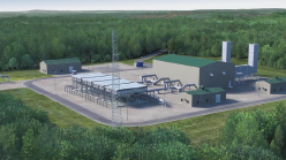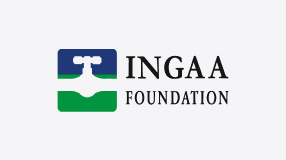The outlook for natural gas pipeline construction has never been brighter.
Natural gas consumption has increased significantly over the years. Since 1985, world consumption of natural gas has increased 26%. World demand is now about 75 Tcf per year. The increase would probably have been higher had the economies of the Former Soviet Union not fallen dramatically during this period. Clearly, the value of natural gas is being recognized in both the developed and developing parts of the world. Nowhere is this more apparent than in the Asia Pacific region, where consumption of natural gas has doubled over the past ten years.
Supplies of natural gas are plentiful. Worldwide proven reserves approach 5,000 Tcf and represent over 65 years of supply at current rates of production. Moreover, significant discoveries continue to be made increasing the likelihood that supplies will be abundant well into the 21st century.
Most natural gas is supplied from regional production close to the area of consumption. However, there has been a significant increase in worldwide trading of natural gas. International trade now represents 14% of consumption, increasing by 11% in 1995. The largest natural gas trade is still between Canada and the U.S. Nevertheless, all major consuming regions are creating growth in international trade, spurred on by the desire to develop large deposits of natural gas from regions that are now accessible because of recent political and economic changes, as well as technological advances that have been driving development costs downward.
Some of the increase in demand will be supplied via LNG tankers, particularly to the markets of Japan, South Korea, and Taiwan. However, pipelines will dominate transportation to all other markets. Large undeveloped natural gas reserves exist in the North Sea, North Africa, Russia (both west and east Siberia), Turkmenistan, Iran, Qatar, Indonesia, China, and Australia. New pipelines are being planned to bring these resources to market.
These trends became evident in our research, which uncovered a total of 266 natural gas pipeline projects outside of North America representing 82,131 miles (see table below). More than 75,000 miles are planned for 1997 and beyond, enough to circle the earth three times! Currently, about 7,000 miles of natural gas pipelines are under construction. Most of the projects under construction are in Europe and Australia.
Table 1-1
Almost 25,000 miles of pipelines are planned for South America. Much of this total is to bring natural gas from Argentina and Bolivia to Brazil, Paraguay, Uruguay, and Chile. Both Chile and Colombia will be making significant additions to their gas transmission systems. About 1,000 miles of pipeline construction are contemplated to bring Peru’s huge Camisea Field to market.
The Asia Pacific region stands out with 100 projects planned for a total length of over 20,000 miles. Most of these projects are to bring remote discoveries to populated areas of Australia, Indonesia, and Thailand. Australia is moving closer to a national grid with pipeline projects designed to connect the states. Indonesia, Malaysia, and Thailand are respectivelyplanning pipelines across Java, Sumatra, the Malay Peninsula, and Southern Thailand to the Bangkok area. When completed, this will form the main part of the Trans-Asean system. Gas fields in Myanmar and Vietnam will also connect to this system.
In China, several projects have been proposed to take gas from the Ordos basin to Beijing and other nearby cities. There are plans to connect the offshore Ping Hu Field to Shanghai by way of a 249-mile pipeline.
Large transmission projects have been proposed to take the vast reserves from the countries of the Middle East and FSU to consuming areas in Europe, India, and Japan. Most of these projects are likely to take five to ten years before construction begins.
A total of 49 projects were found in Europe, totaling around 7,000 miles. Competition between distributors has led to an expansion of national grids in Northwest Europe utilizing natural gas from the North Sea and Russia. Italy, Spain, and Portugal are adding transmission lines to accommodate the increase in natural gas imports from Algeria. Several projects have been proposed to carry natural gas through Turkey. Turkey is at a strategic crossroad between the major reserves of the Middle East and Central Asian Republics, and the major consuming markets of western Europe.
Most of the pipeline projects planned in Africa are located in North Africa to connect gas fields to the trunklines that bring gas to southern Europe. There are also projects to carry natural gas to South Africa from Namibia and Mozambique.





